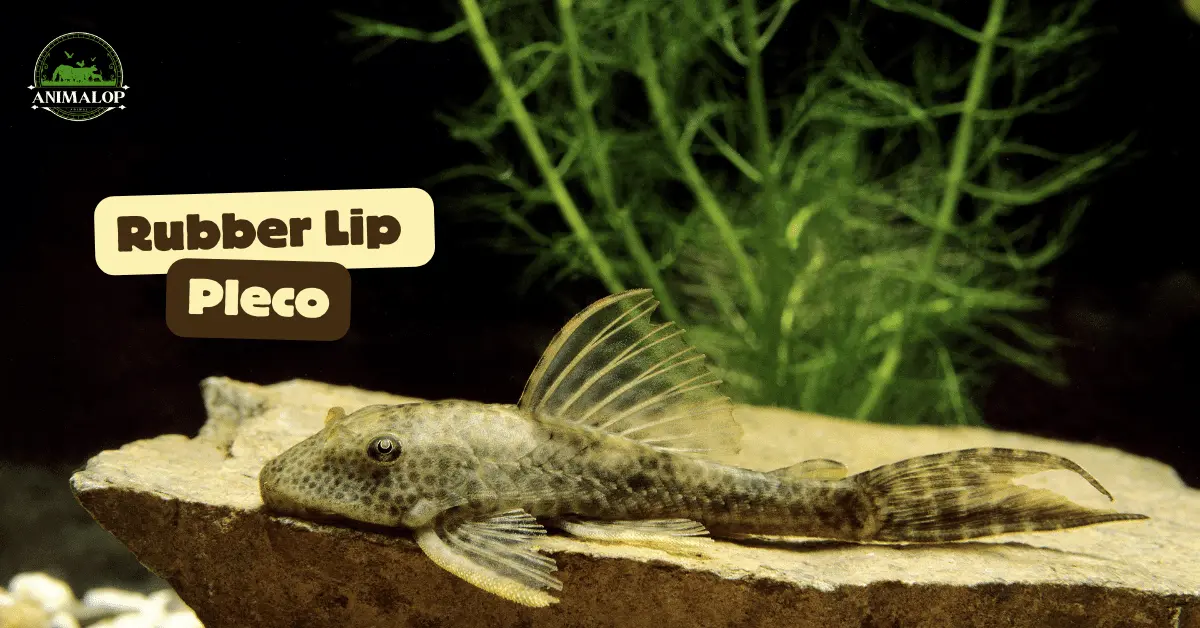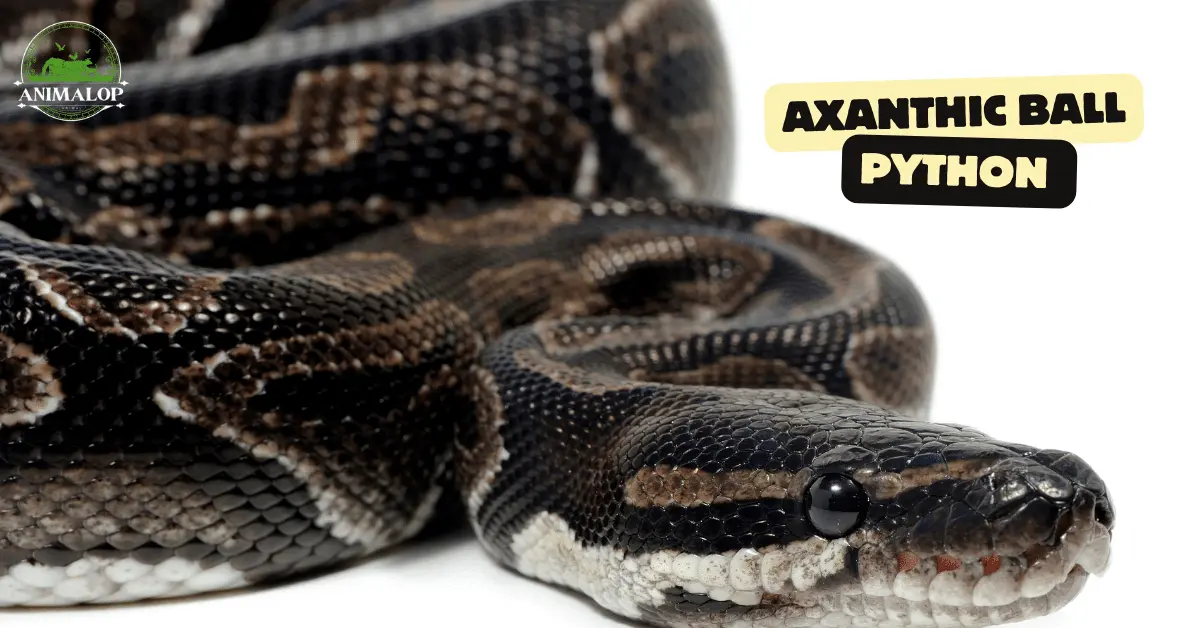Do you know there’s a small, tough fish that could live in changing waters? Have you ever heard of the Rubber Lip Pleco, a South American fish with a big mouth for munching on plants? That’s Rubber Lip Pleco which is a small fish from the northern parts of South America, part of a big family of hard-skinned catfish.
It has a big mouth for sucking, eyes on top of its head, and a body that gets narrower towards the end. They are usually grey but can be tan, with spots on their face and sometimes stripes on their lower body. They are smaller than other Plecos, growing only about 5-7 inches long.
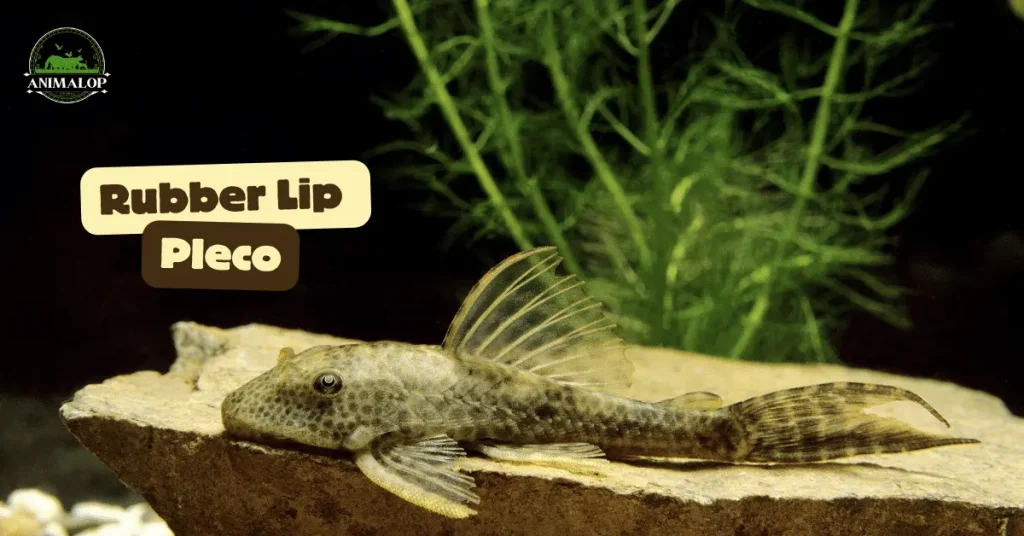
They live in rivers and streams that get a lot of rain, causing changes in water levels and temperatures. They’re strong and can handle different water conditions. They like areas with lots of plants, which is what they eat. Sounds interesting? Let’s get into its breed profile.
Rubber Lip Pleco: Quick Profile
How Big Do Rubber Lip Plecos Get: Appearance And Personality
Rubber Lip Plecos usually grow to about 6.5 to 7 inches in length. They’re not as big as some other Pleco types, and how big they get can depend on their diet and their genes.
Rubber Lip Plecos have a body shape just like other Plecos, with a big mouth like a suction cup and a small snout that points up to the top of their head.
Their body gets slimmer from their eyes down to their tail. Their eyes are on top of their head, which helps them watch for danger while they’re busy eating at the bottom of the tank or river.
Moreover, they’re always nibbling on something, so being able to keep an eye out above them is key!
Their back fin starts about a third of the way down their body and can spread out wide. Depending on what they’re doing or the water they’re in, this fin can either stick up or lay flat. Plus, their tail fin does the same. Their side fins help them swim around, but when they’re not moving much, these fins just hang by their sides.
As for color, they range from grey to a yellowish-brown. This can change based on their age, whether they’re male or female, and the conditions of their tank.
Additionally, they have patterns and spots all over, starting near their side fins and getting denser towards their tail. They also have little dots all over, especially on their faces.Their color remains the same as they grow older.
Lifespan of Rubber Lip Pleco
Rubber Lip Plecos usually live between 10 to 12 years. Their lifespan can really stretch out if they’re kept in good tank conditions and fed well. However, if they get stressed, are stuck with tank mates that don’t suit them, or don’t have enough room, they might not live as long.
Are Rubber Lip Plecos Aggressive?
Rubber Lip Plecos are generally calm and friendly fish. They get along very well in a big tank with their mate fish in the tank. They do best with other small, fast fish that don’t hang around the bottom much.
They’re not the type to start trouble, but they won’t get along with very aggressive fish and might end up fighting. To keep things peaceful, it’s best not to put them in a tank with other Plecos.
Rubber Lip Pleco Origin And History
The Rubber Lip Pleco, also known as Chaetostoma Milesi, is a freshwater fish from South America. You could see them in places such as the Apure River in Venezuela, the Magdalena River in Colombia as well as the smaller streams that flow into these rivers.
When the rainy season hits, these rivers change a lot in temperature and water levels. This shows that Rubber Lip Plecos have great strength since they can handle different water conditions without trouble.
They love staying at the bottom of the river, munching on algae from rocks, wood, and plants. They’re known to grow up to about 5.1 inches long. In the fish tank world, people often call them bulldog pleco or rubbernose pleco because of their appearance and where they like to hang out.
Rubber Lip Pleco Breeding
Breeding Rubber Lip Plecos is really resilient. There haven’t been many cases where they’ve successfully bred in tanks. Most Rubber Lip Plecos you find for sale are caught from the wild.
For these fish to breed, they need a huge tank, over 300 gallons, which is way too big for most homes. Plus, getting the perfect conditions for them to breed at home is almost never achieved, so trying to breed them usually doesn’t work out.
Rubber Lip Pleco Care
Rubber Lip Plecos are even-tempered which aren’t too hard to care for. They’re calm, so they fit right into a tank with other fish. They prefer staying at the bottom, often hiding under rocks or wood during the day. They’re night owls, mostly looking for food when it’s dark. They’re pretty curious when they’re up and about, cleaning the tank by sucking on the glass and decorations.
Setting up their tank the right way and keeping it clean is important, but even someone new to fishkeeping can manage these fish without much trouble.
Rubber Lip Pleco Tank Size
Even though Rubber Lip Plecos are smaller in size, they still need to live in a tank which is minimum 25 gallons (95 liters) big. Some people might say they can live in smaller tanks, but it’s better to give them plenty of room to be happy and healthy.
If you want to keep them with other fish, especially other Plecos, you should have a tank that’s at least 55 gallons (208 liters). If you can, I would suggest you to provide your Pleco as big a tank as you could.
Rubber Lip Pleco Tank Setup
For a Rubber Lip Pleco, you’ll want a tank full of plants, driftwood, and places to hide. Any kind of freshwater plant works well, and they really like floating plants too. It’s also good to have a soft bottom in the tank, like smooth rocks, because they spend a lot of time at the bottom.
Driftwood is super essential for a Rubber Lip Pleco’s tank. It gives them a great spot to hide and check out, just like in their natural home. So, if you’re thinking about getting these fish, definitely add some driftwood to their tank. They’ll really appreciate it!
Water Parameters For Rubber Lip Pleco
Rubber Lip Plecos like freshwater that’s similar to what they have back home in South America. They’re robust fish, but it’s still better to keep an eye on the water to make sure it’s just right for them.
They prefer warm water between 72-78°F (22-26°C). They can handle a little cooler water too, because they’re used to changing seasons in the wild.
A water pH level from 6.5 to 8 is perfect for Rubber Lip Plecos. For water hardness, they do best in water that’s between 8-12kDH.
Rubber Lip Plecos Tank Mates
Rubber Lip Plecos are really chill, making them great buddies for lots of different fish. They’re happiest with other calm fish.
Some good friends for Rubber Lip Plecos include:
- Ember tetra
- Honey gourami
- Neon tetras
- Cory catfish
- Sparkling gourami
- Goldfish
- Shrimp
Rubber Lip Plecos can get a slightly protective of their space if you put them with other Plecos. If you’re thinking about adding a Bristlenose Pleco, just make sure your tank’s big enough for both to have their own spots.
Bristlenose Plecos usually don’t mess with Rubber Lip Plecos if there’s enough room. But, stay away from more aggressive fish like cichlids and betta fish; they could cause trouble. It’s good to know how your fish act and if they’ll get along well.
do you know about Sapphire Splash Chicken Breed
Rubber Lip Pleco Food & Diet
Rubber Lip Plecos are mostly plant-eaters, even though they can eat almost everything. In the wild, they mostly eat algae, but the algae in your tank won’t give them all the nutrients they need. Trying to grow the right kind of algae for them in a tank is tough and might not even work well enough to feed them properly. But, these fish are happy to eat vegetables and other green stuff.
Here’s what you can feed Rubber Lip Plecos:
- Spirulina
- Fresh zucchini
- Algae wafers or sheets
- Romaine lettuce
- Peas
- Spinach
You can sometimes give them meaty foods like freeze-dried bloodworms or brine shrimp, but they’re better off eating mostly plants.
Be careful, though, because if you feed them lots of different veggies, they might stop eating algae and not help clean your tank as much. It’s good to feed them twice a day, but only give them as much as they can eat in a few minutes.
A good plan is to feed them for six days and then not feed them on the seventh day. This helps prevent overfeeding, especially if you’re new to owning this fish. Also, you ought to remove any food that isn’t eaten and falls to the bottom.
Rubber Lip Pleco Health Concerns
Plecos, including Rubber Lip Plecos, are usually very healthy fish. If you keep your tank clean and do regular water changes, you’re less likely to run into problems. However, if diseases like ich or other infections show up in your tank, your Pleco could get sick too.
Rubber Lip Plecos are really sensitive to how salty their water is because they don’t have scales.
Also, any medicine that has copper in it is dangerous for Rubber Lip Plecos. If you need to use it for other fish, it’s better to move your Pleco to a different tank for a while.
If your Pleco starts showing white spots, has damaged fins, stops eating, or seems slow and tired, these could be signs they’re not feeling well. Keeping your tank clean and not adding new things without checking them first can help prevent diseases. Things like decorations and plants can carry germs too. Rubber Lip Plecos are hardy, so if you catch any sickness early and treat it, you can usually stop it from spreading to other fish. Feeding them right and keeping the tank clean are the best ways to keep them healthy.
Rubber Lip Pleco Facts
- Usually living in the Colombia Magdalena River, Rubber Lip Plecos is a wild type fish.
- They’re known by several names, including ‘Striped Pleco’, ‘Rubber Lipped Plecostomus’, ‘Blonde Bulldog Pleco’, and ‘Spotted Rubbernose Pleco’.
- Often, they’re mistakenly sold as Rubber Plecos or other Pleco varieties.
- Their colors could be changing as per different aspects like the fish’s health.
- Impossible to breed in home aquariums, you could find Rubber Lip Plecos usually in the wild.
Rubber Lip Pleco pictures
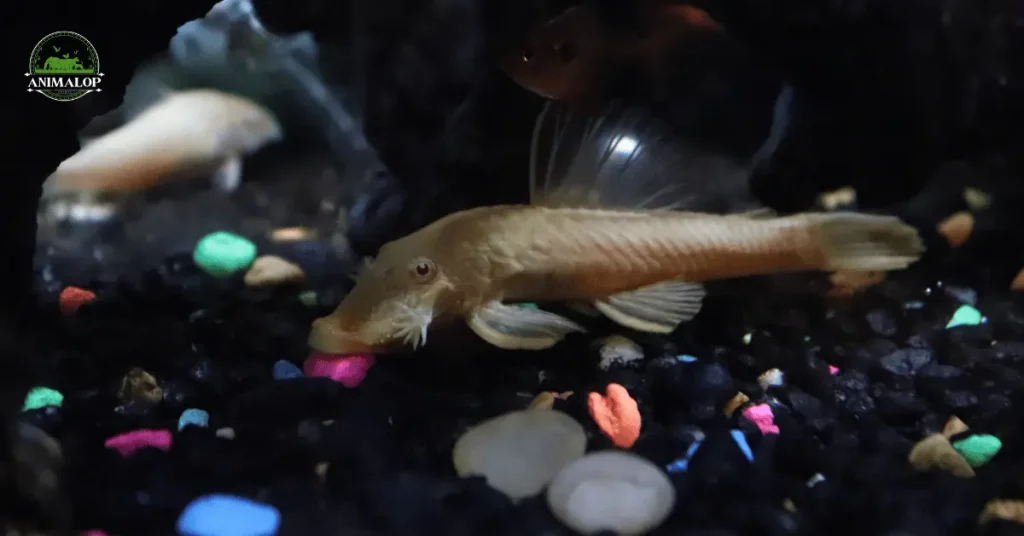
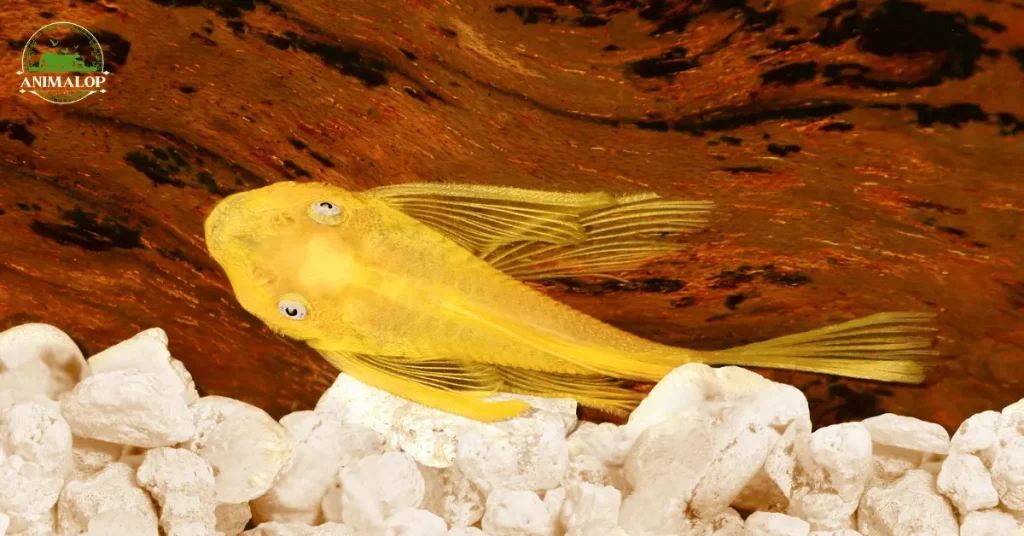
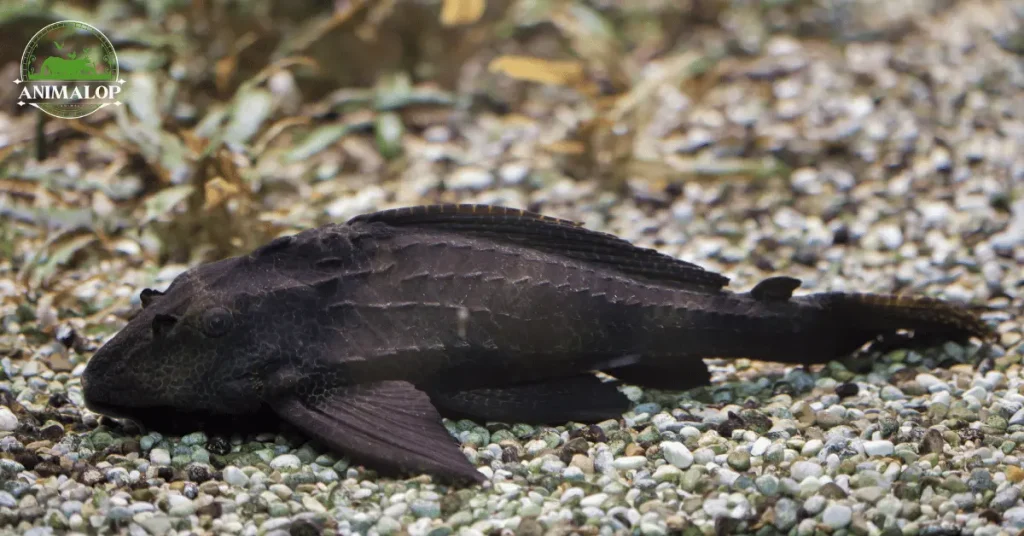
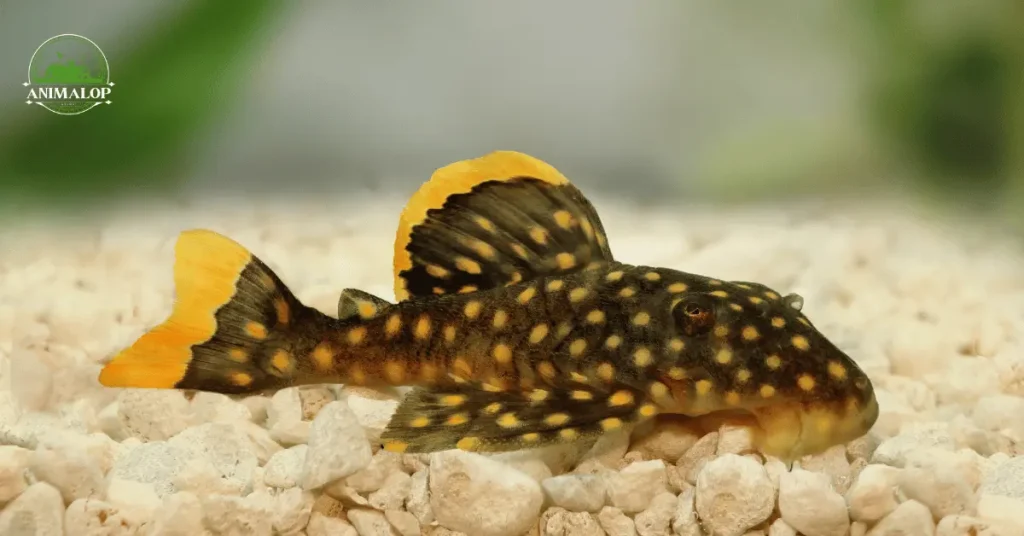
Rubber Lip Pleco Female Vs Male
To differentiate between female and male Rubber Lip Plecos, look at their size. Males are bigger than females. Male Rubber Lip Plecos have bigger heads, bigger front fins, and a skinnier belly compared to females.
Rubber Lip Pleco vs Bristlenose
Rubber Lip Plecos and Bristlenose Plecos are both great for algae control, but Bristlenose Plecos are a little smaller and have unique bristles on their noses. Rubber Lip Plecos are more simpler and have smoother faces.
Rubber Lip Pleco vs Common Pleco
Rubber Lip Plecos are much smaller than Common Plecos, reaching about 7 inches compared to the Common Pleco’s potential 2 feet. They’re better suited for smaller tanks, while Common Plecos need a lot of space.
Rubber Lip Pleco vs Clown Pleco
Both Rubber Lip and Clown Plecos stay small, perfect for smaller tanks. Clown Plecos have unique patterns and are known for their love of wood, while Rubber Lip Plecos have a more uniform color and focus on algae.
FAQs
Final Thoughts
Rubber Lip Plecos are versatile, easy-to-care-for fish perfect for both beginner and experienced fish keepers. They thrive in well-set-up tanks with plenty of hiding spots and a diet rich in plants. While peaceful with most tank mates, they need conditions of water for staying healthy.
With proper care, these small, algae-eating fish can be a joyful addition to any freshwater aquarium, bringing both beauty and utility to their underwater world.

